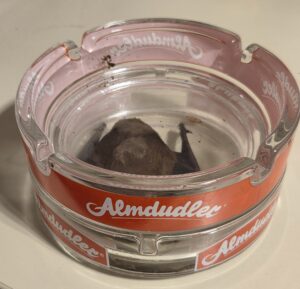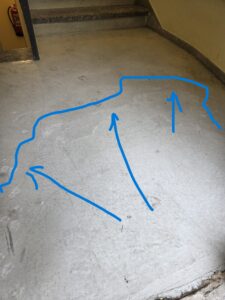
© Ingrid Haunold
In meiner Liegenschaft wird endlich – nach 12 Jahren Wartezeit – der defekte Terrazzoboden im Eingangsbereich meines Stiegenhauses saniert. Auch in anderen Stiegenhäusern der Liegenschaft erfolgt die Sanierung dieser Böden, aber mich interessiert natürlich in erster Linie die Sanierung “meines” Stiegenhauses.
Derzeit schaut alles noch grausig aus, man sieht nur eine “Betonschicht”. Ich dachte ursprünglich, dass da ein Fehler passiert ist, dass gar kein Terrazzoboden installiert, sondern der Terrazzoboden nur durch einen Betonboden ersetzt wurde. Glücklicherweise ist das nicht der Fall. Ich war aber sehr erstaunt, als mir der Chef der Steinmetzfirma mitteilte, dass diese “Betonschicht” der Terrazzoboden sei — die Schicht muß noch abgeschliffen werden, und dann erscheint anscheinend wie durch Magie der Terrazzoboden….
Na ja, ich bin nicht glücklich über diese bautechnische Lösung, es handelt sich um einen Kunsterrazzoboden, d. h. einen Gussterrazzoboden. Aber die Hausverwaltung hat sich für diese Version entschieden und die Eigentümerinnen und Eigentümer nicht über Optionen informiert bzw. auch nicht über Optionen abstimmen lassen, was aber leider völlig legal ist. Die Hausverwaltung hat diesbezüglich leider große Handlungsfreiheit. Jetzt warte ich mit angehaltenem Atem, ob das auch wirklich ein schöner – und vor allem ein gleichmäßiger, und kein schiefer – Terrazzoboden wird.
Wie man auf dem obigen Foto sieht, hat sich die “Betonschicht” teilweise gesenkt. Wenn die Schicht geschliffen wird, muß sie ja auf den tiefsten Punkt geschliffen werden, damit der Boden am Schluß dann eben ist. Allerdings muß der Boden auf der gleichen Höhe sein wie die Kellerstiege die ganz oben links im Bild ist. Tiefer kann also nicht geschliffen werden. Ob sich das ausgeht….? Mir wird jedesmal mulmig im Magen, wenn ich aus dem Haus gehe, denn der gesenkte Teil der “Betonschicht” ist doch sehr markant. Hoffentlich geht sich das aus, dass letztendlich ein gerader, schön geschliffener Terrazzoboden zum Vorschein kommt und der Boden nicht an unterschiedlichen Stellen unterschiedlich hoch ist.
Da ich seit 2013 die Erhaltungsarbeiten an diesen Böden einfordere, bin ich mittlerweile sehr frustriert und gereizt. Zwei Hausverwaltungen haben die Sanierung immer wieder verschoben. In einem Gutachten eines Architekturbüros aus dem Jahr 2018 wurde die Instandsetzung dieses Bodens in “meinem” Stiegenhaus als notwendige Erhaltunsmassnahme angeführt. Die Brichard Immobilien GmbH hat ab 2019 die Verwaltung der Liegenschaft übernommen, da war das also schon dokumentiert. In den Jahren 2020/2021 wurde die Liegenschaft umfassend saniert und der damalige Mitarbeiter der Hausverwaltung, der heute nicht mehr bei der Firma tätig ist, hat mir versichert, dass der Terrazzoboden nach Beendigung aller anderen Erhaltungsmassnahmen saniert wird.
Fein, ich habe mich geduldet. Aber dann waren die Sanierungsarbeiten der Liegenschaft fertig…und der Terrazzoboden wurde noch immer nicht saniert.
Ich habe mir jetzt die Protokolle der Eigentümerversammlungen der letzten Jahre durchgelesen. In dem Protokoll der Versammlung vom 1. September 2022 wurde festgehalten, dass der Boden beschädigt ist, das Protokoll enthält ein Foto und die Mitarbeiterinnen der Verwaltung präsentierten einen Kostenvoranschlag für eine Ausbesserung des Bodens. Damit wären aber nur einzelne Teile des Bodens ausgebessert worden, das hätte nicht schön ausgeschaut und es wurde von Wohnungseigentümern der Wunsch geäußert nach einem Kostenvoranschlag für die Sanierung des gesamten Terrazzobodens. Ich war bei dieser Versammlung selbst nicht anwesend, es waren aber eben auch andere Wohungseigentümerinnen und Wohungseigentümer nicht glücklich mit dem Vorschlag, nur einzelne Teile des Bodens auszubessern. Die Mitarbeiterinnen der Hausverwaltung versprachen, einen neuen Kostenvoranschlag einzuholen und nach Erhalt des Angebots die Eigentümergemeinschaft zu informieren.
Danach haben wir gewartet, und gewartet, und gewartet…
Erst ein Jahr später, während der Versammlung am 2. Oktober 2023, hat die Hausverwaltung neue Informationen geliefert und die Kosten für eine Gesamtsanierung der Terrazzoböden (von mittlerweile drei Stiegenhäusern) präsentiert.
Wir haben also ein ganzes Jahr darauf gewartet, dass ein Kostenvoranschlag eingeholt und dieser den Eigentümerinnen und Eigentümern präsentiert wurde. Da Eigentümerinnen und Eigentümer während dieser Versammlung im Jahr 2023 meldeten, dass die Böden so kaputt seien, dass Stolpergefahr bestehen würde, teilte die Hausverwaltung mit, dass die Sanierung der Böden beauftragt wird.
Danach haben wir wieder gewartet, und gewartet, und gewartet….
Trotz Stolpergefahr mussten wir warten, und warten, und warten…
Wieder ein Jahr später, während der nächsten Eigentümerversammlung am 10. Dezember 2024, teilte die Hausverwaltung mit, dass die Sanierung der Terrazzoböden bereits beauftragt wurde. An den Verzögerungen seien Terminprobleme des Auftragnehmers, d. h. der Steinmetzfirma, schuld.
Ich habe für diese “Erklärung” der Hausverwaltung überhaupt kein Verständnis: Wenn die Hausverwaltung Aufträge vergibt, dann müssen doch Termine fix vereinbart werden. Wenn Handwerksbetriebe Termine nicht einhalten können, dann erwarte ich, dass die Aufträge unverzüglich an andere Firmen vergeben werden.
Der Auftragnehmer — die Hausverwaltung informierte nicht, welche Firma beauftragt wurde — wollte laut Angaben der Hausverwaltung die Sanierung im November 2024 durchführen. Da das aber zu dieser Zeit schon kalt sei und das Haustor zum Trocknen der sanierten Terrazzoböden über Nacht offenstehen müsse, hätte die Mitarbeiterin der Hausverwaltung den Sanierungstermin verschoben, auf einen wärmeren Zeitpunkt. In dem Protokoll der Versammlung wurde sogar festgehalten, dass die Eigentümerinnen und Eigentümer aufgrund der langen Wartezeiten für die Sanierung verärgert sind. Die Hausverwaltung versprach, dass in Zukunft “effizienter” gearbeitet werden soll.
Und dann haben wir wieder gewartet, und gewartet, und gewartet…..
Am 7. August 2025 wurden wir dann verständigt, dass es – wieder einmal – ein neues Betreuerteam für unsere Liegenschaft gibt, und liegengebliebene Aufgaben jetzt rasch aufgearbeitet werden.
Seit dem 24. September 2025 werden die Terrazzoböden jetzt endlich, endlich, endlich saniert…. Falls da jetzt keine gute Arbeit geleistet wird, und der Boden aufgrund der Senkung der “Betonschicht” uneben wird, wird man meinen Wutschrei quer durchs ganze Internet hören können.
Aber jetzt atme ich erst einmal tief durch…ein…aus…ein…aus….hoffentlich klappt die Sanierung. Ich habe wirklich lange genug darauf gewartet, dass die Original-Terrazzoböden aus den 1960er Jahren ordentlich (!!!) saniert werden.




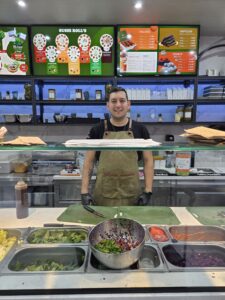
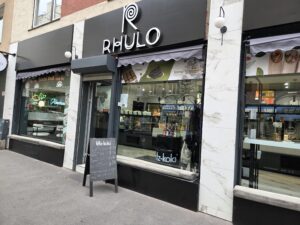




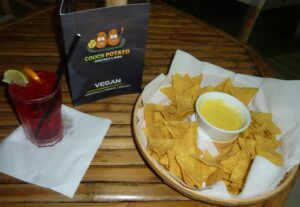

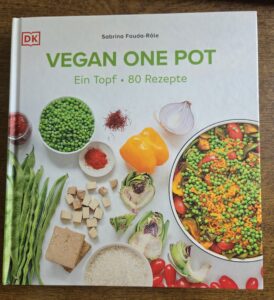 Die Originalausgabe dieses Buches wurde im Jahr 2021 in französischer Sprache veröffentlicht, die deutsche Ausgabe erschien im selben Jahr im
Die Originalausgabe dieses Buches wurde im Jahr 2021 in französischer Sprache veröffentlicht, die deutsche Ausgabe erschien im selben Jahr im 

